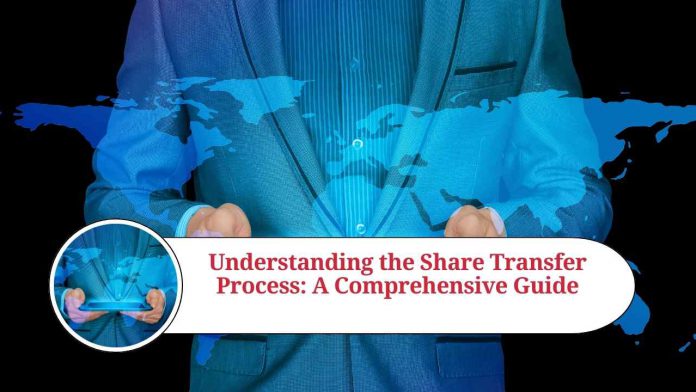Share Transfer Process
When it comes to buying and selling shares, the transfer process can seem daunting. However, it doesn’t have to be. In this guide, we’ll walk you through the basics of transferring shares so that you can make informed decisions about your investments.
Step 1: Identify the Shares You Want to Transfer
Before you can transfer shares, you need to know which shares you want to transfer. This means you need to identify the shares in your possession that you want to sell, as well as the shares you want to buy. Once you have this information, you can move on to the next step.
Step 2: Find a Buyer or Seller
If you’re looking to sell shares, you’ll need to find a buyer. Similarly, if you’re looking to buy shares, you’ll need to find a seller. There are several ways to find buyers or sellers, including through a stockbroker, online marketplaces, or through your personal network.
Step 3: Agree on the Terms of the Transfer
Once you’ve identified a buyer or seller, you’ll need to agree on the terms of the transfer. This includes the price of the shares, the payment method, and any other conditions of the sale. It’s important to ensure that you’re both on the same page before moving forward with the transfer.
Step 4: Complete the Transfer Form
The transfer form is the legal document that officially transfers ownership of the shares from the seller to the buyer. This document will include details such as the names and addresses of the parties involved, the number of shares being transferred, and the consideration for the transfer. The transfer form will need to be signed by both parties and may need to be witnessed or certified by a solicitor or notary public.
Step 5: Submit the Transfer Form
Once the transfer form is completed and signed, it needs to be submitted to the relevant share registry or company. This will typically involve sending the form by post or email, along with any additional documents or fees that may be required. The share registry or company will then update their records to reflect the new ownership of the shares.
Step 6: Receive Confirmation of the Transfer
Once the transfer has been processed, you should receive confirmation from the share registry or company. This will typically include a new share certificate or a confirmation letter, which will show the updated ownership details.
Conclusion
Transferring shares may seem complex at first, but it’s a straightforward process once you understand the basics. By following these steps and seeking professional advice where necessary, you can confidently buy and sell shares, and make the most of your investments.
Frequently Asked Questions (FAQs)
Q: What is a share transfer?
A: A share transfer is the process of transferring the ownership of shares from one person or entity to another.
Q: Why would someone want to transfer shares?
A: There are many reasons why someone might want to transfer shares, including selling shares to raise funds, transferring shares as part of a business merger or acquisition, or transferring shares as part of estate planning.
Q: What information is required for a share transfer form?
A: A share transfer form will typically require the names and addresses of the parties involved, the number of shares being transferred, and the consideration for the transfer.
Q: Is it necessary to use a solicitor or notary public when completing a share transfer form?
A: In some cases, it may be necessary to have a solicitor or notary public witness or certify the share transfer form. This will depend on the requirements of the relevant share registry or company.
Q: How long does the share transfer process take?
A: The length of time it takes to complete a share transfer will depend on a variety of factors, including the efficiency of the relevant share registry or company, the completeness of the transfer form, and any additional documents or fees required.
Q: Is there a limit to the number of shares that can be transferred at once?
A: There is generally no limit to the number of shares that can be transferred at once. However, it’s important to ensure that the transfer form is completed accurately and that any additional requirements are met.
Q: Can shares be transferred internationally?
A: Yes, shares can be transferred internationally. However, the process may be more complex, and additional requirements may need to be met, such as complying with foreign ownership restrictions or tax laws.
Q: Can a transfer of shares be reversed?
A: In general, once a share transfer has been completed, it cannot be reversed. However, there may be certain circumstances where the transfer can be cancelled or reversed, such as in cases of fraud or mistake.




















